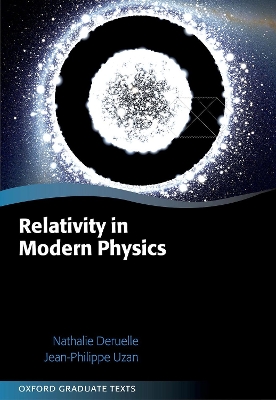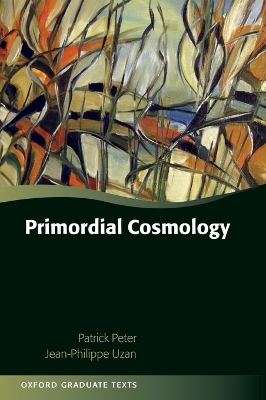Oxford Graduate Texts
2 total works
This comprehensive textbook on relativity integrates Newtonian physics, special relativity and general relativity into a single book that emphasizes the deep underlying principles common to them all, yet explains how they are applied in different ways in these three contexts.
Newton's ideas about how to represent space and time, his laws of dynamics, and his theory of gravitation established the conceptual foundation from which modern physics developed. Book I in this volume offers undergraduates a modern view of Newtonian theory, emphasizing those aspects needed for understanding quantum and relativistic contemporary physics.
In 1905, Albert Einstein proposed a novel representation of space and time, special relativity. Book II presents relativistic dynamics in inertial and accelerated frames, as well as a detailed overview of Maxwell's theory of electromagnetism. This provides undergraduate and graduate students with the background necessary for studying particle and accelerator physics, astrophysics and Einstein's theory of general relativity.
In 1915, Einstein proposed a new theory of gravitation, general relativity. Book III in this volume develops the geometrical framework in which Einstein's equations are formulated, and presents several key applications: black holes, gravitational radiation, and cosmology, which will prepare graduate students to carry out research in relativistic astrophysics, gravitational wave astronomy, and cosmology.
Newton's ideas about how to represent space and time, his laws of dynamics, and his theory of gravitation established the conceptual foundation from which modern physics developed. Book I in this volume offers undergraduates a modern view of Newtonian theory, emphasizing those aspects needed for understanding quantum and relativistic contemporary physics.
In 1905, Albert Einstein proposed a novel representation of space and time, special relativity. Book II presents relativistic dynamics in inertial and accelerated frames, as well as a detailed overview of Maxwell's theory of electromagnetism. This provides undergraduate and graduate students with the background necessary for studying particle and accelerator physics, astrophysics and Einstein's theory of general relativity.
In 1915, Einstein proposed a new theory of gravitation, general relativity. Book III in this volume develops the geometrical framework in which Einstein's equations are formulated, and presents several key applications: black holes, gravitational radiation, and cosmology, which will prepare graduate students to carry out research in relativistic astrophysics, gravitational wave astronomy, and cosmology.
This book aims at giving the basis of primordial cosmology. The book is self-contained in the sense that all the elements for the derivations of the presented results are given. It can be used as a textbook to study cosmology. It is devided in 3 parts. Part 1 summarises the fundamentals in theoretical physics needed in cosmology (general relativity, field theory, particle physics). Part 2 describes the standard model of cosmology and includes cosmological solutions of Einstein equations, hot big bang model, cosmological perturbation theory, cosmic microwave background anisotropies, lensing and evidences for dark matter, and inflation. Part 3 describes extensions of this model and opens up to today's research in the field: scalar-tensor theories, supersymetry, the cosmological constant problem and acceleration of the universe, topology of the universe, grand unification and baryogenesis, topological defects and phase transitions, string inspired cosmology including branes and latest developments. The book provides details of all derivations and leads the student up to the level of research articles.

